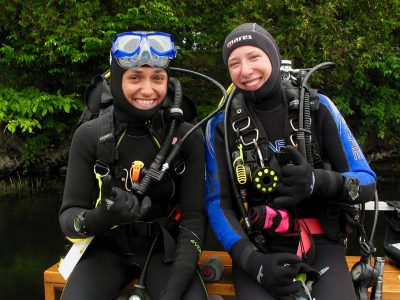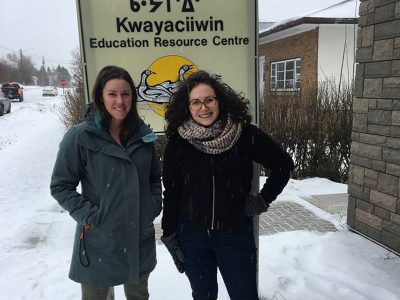By Francine Darroch and Lyndsay M.C. Hayhurst
This article is republished from The Conversation under a Creative Commons licence. All photos provided by The Conversation from various sources.
The COVID-19 pandemic resulted in decreased levels of physical activity, which has implications for physical and mental health. Physical activity can also be an important tool for recovery from the collective trauma experienced and exacerbated throughout the pandemic, especially for equity-seeking communities.
During the pandemic, high levels of stress, isolation and inequity have had a disproportionate impact on women, girls across the globe. Progress that had been made on gender equality and women’s rights has been reversed in areas such as employment and economic setbacks and expanding domestic roles. According to the United Nations, a “shadow pandemic” of violence against women emerged during the pandemic that has disproportionately affected racialized women and girls.
There have been multiple calls to address negative effects of the pandemic on physical and emotional well-being, including the impact of increased violence and poverty on sport participation and safety.
As we move into spring and summer, and more people consider taking up physical activity outdoors, it is crucial to centre issues of equity, inclusion, safety and access. One such strategy is promoting trauma- and violence-informed physical activity.
In seeking gender responsive approaches to pandemic recovery, there is a need to improve access to physical activity by creating inclusive opportunities for equity-seeking populations. Our research has used trauma- and violence-informed physical activity as a tool to address inequity in physical activity, and explored the potential for sport to help prevent gender-based violence as part of development interventions.
Trauma- and violence-informed physical activity
Trauma- and violence-informed physical activity research has highlighted how this approach may be useful to create ways to equitably work with program participants and to reach new participants. Importantly, this approach addresses structural and systemic issues of access in COVID-19 recovery efforts. Given the competing social determinants of health, there is often a lack of political will and/or commitment to sustainable funding for recreational physical activity focused on women living in poverty.
Trauma- and violence-informed physical activity is an equity-based approach that considers and actively addresses barriers to exercise. This includes collaboration across systems, such as offering physical activity programming or referrals through health and social services that women are already accessing, as well as removing barriers. Examples may include providing free on-site childcare or children’s attendance at programs, transforming spaces to accommodate self-identified women-only programming and using invitational language that focuses on choices rather than directives.
Recognizing the intersections of trauma with health and social issues, this approach integrates understanding of trauma and marginalization into all aspects of program design and delivery.
Through our previous research, we have considered how culture, historical issues and gender shape our critical thinking for new approaches to physical activity. We believe all individuals involved in developing and implementing physical activity programs should address the key tenets of trauma- and violence-informed physical activity:
- Trauma awareness
- Safety and trustworthiness
- Choice and collaboration
- Peer supports
- Strengths-based and capacity building
Trauma- and violence-informed physical activity connects important work on trauma and recovery to sport. It has been identified as a strategy that enhances social connections, community cohesion and collective movement and healing.
Current efforts to engage people in physical activity have focused on individual physical benefits of physical activity and improved mental health. By shifting our focus to address the social determinants of physical activity, there are more options for developing programming and resources designed for specific communities.
Applying the tenets
The pandemic has also further underlined the need to examine the structural and systemic issue of access related to physical activity in COVID-19 recovery efforts. A relatively new and promising approach to improve access to the natural environment is through prescriptions such as Canada’s National Parks (PARX, A Prescription for Nature). This innovative program allows health-care professionals to connect patients to nature as “Canada’s first national, evidence-based nature prescription program.”

(Shutterstock)
This strategy could be further enhanced by using a trauma- and violence-informed physical activity lens by clearly identifying and addressing key barriers to participation:
- Transportation, challenging the assumption that people have equal access to green space; and
- foregrounding intersections of race, gender and class in relation to access and perceptions of “safety” in outdoor spaces. For example, studies have demonstrated that racialized women feel unwelcome in “uncultivated green spaces and rural areas,” and that racialized people are three times more likely than white people to live in places with no access to green spaces.
Considerations of trauma- and violence-informed approaches may improve access and uptake of physical activity, as mainstream programs may not consider social and structural inequities.

(Shutterstock)
Our research aims to better understand how this approach might be a promising post-pandemic intervention for safely addressing trauma caused by things like stress, isolation and violence. It also looks at how such interventions can be developed and scaled up as a tool to be used by health practitioners, sport managers, non-governmental organizations and policy-makers.
This is particularly critical as Canadians will need to consider how gender inequities in physical activity will continue to be exacerbated as the pandemic continues, and how uneven access to safe spaces to participate in inclusive physical activity may delay recovery efforts.
We recognize that trauma- and violence-informed physical activity is not a cure-all. However, having an equity-based approach that considers and actively addresses barriers to participation is one step towards promoting equitable access to physical activity.
![]()
Sunday, May 29, 2022 in The Conversation
Share: Twitter, Facebook



